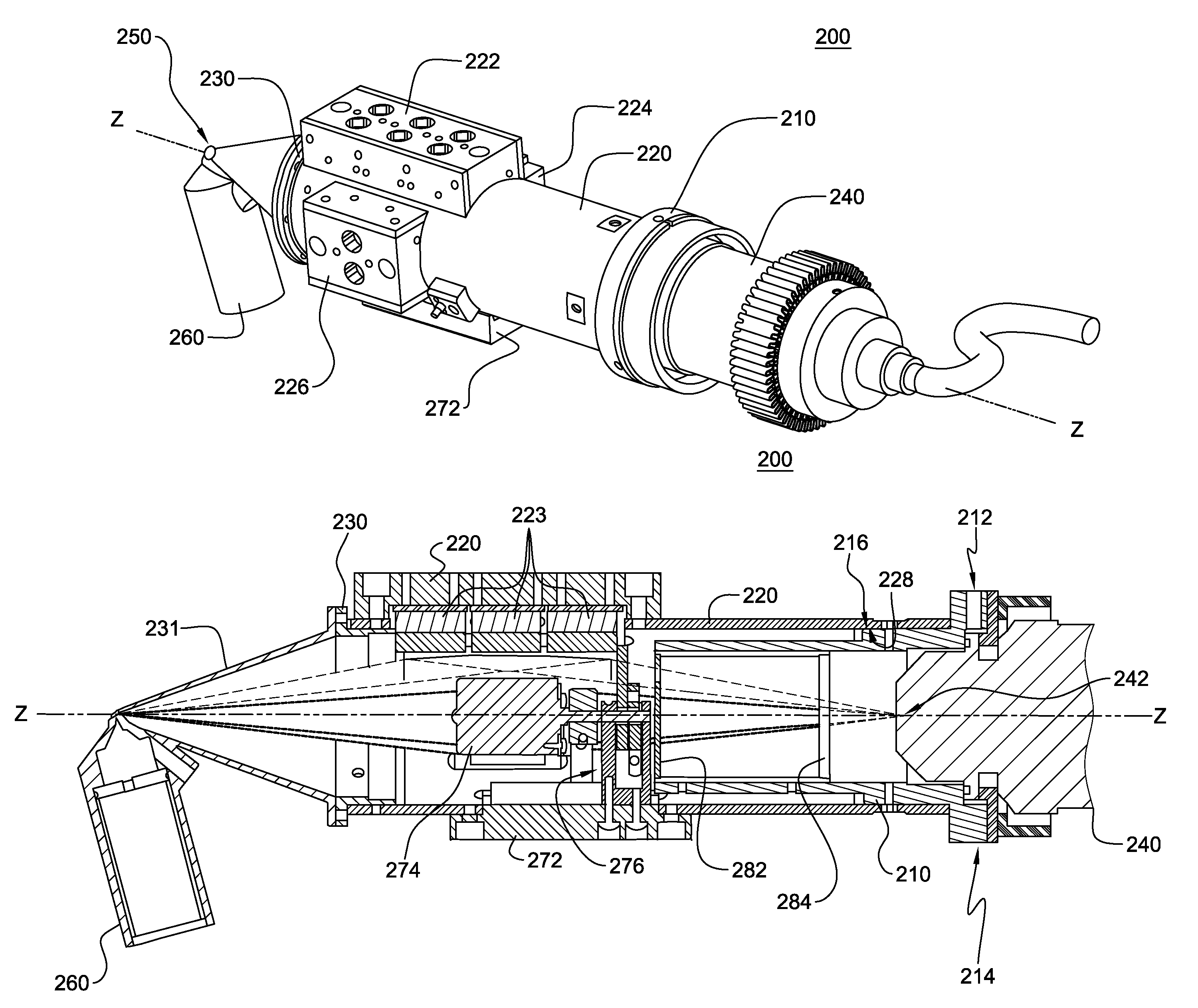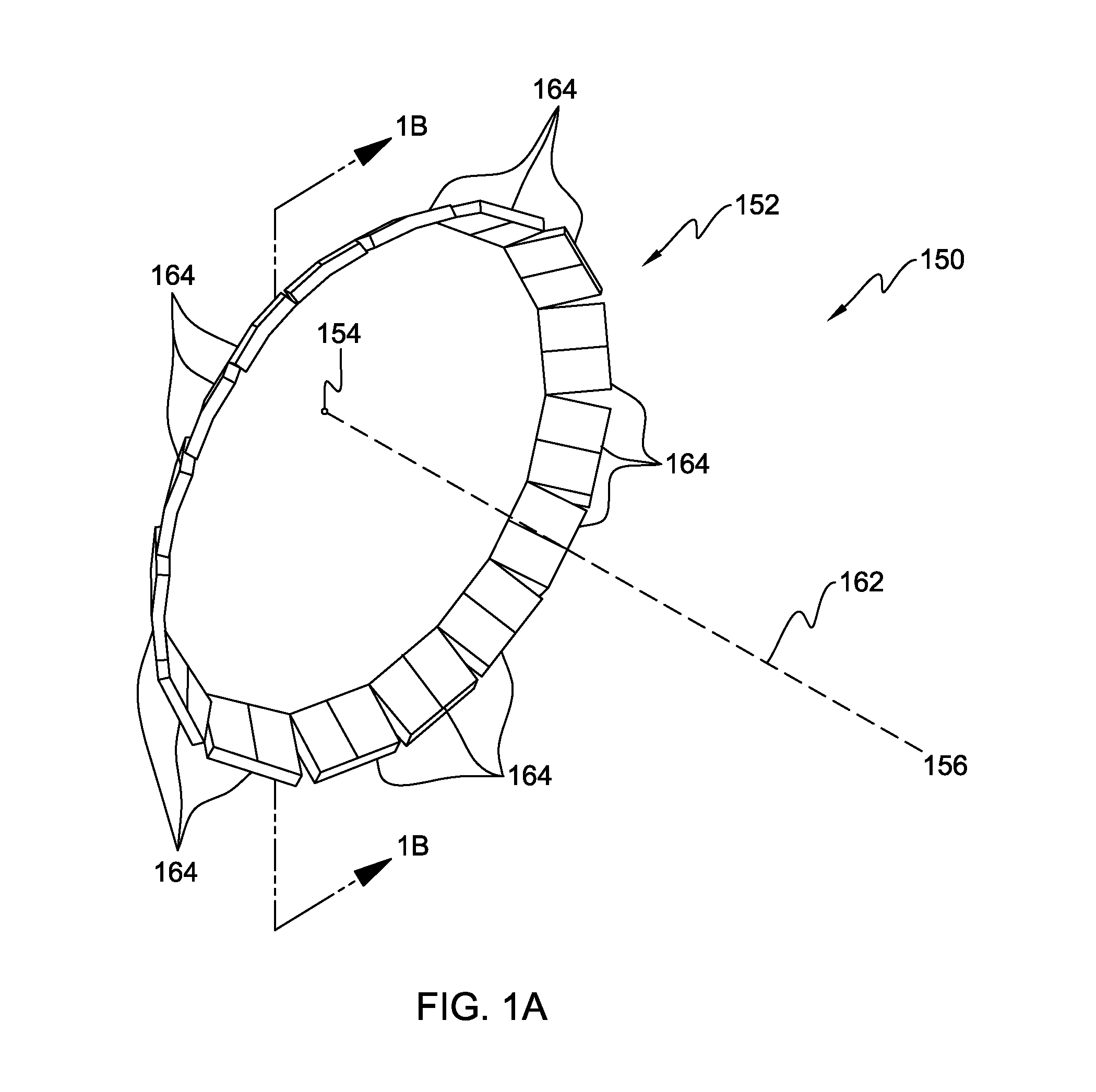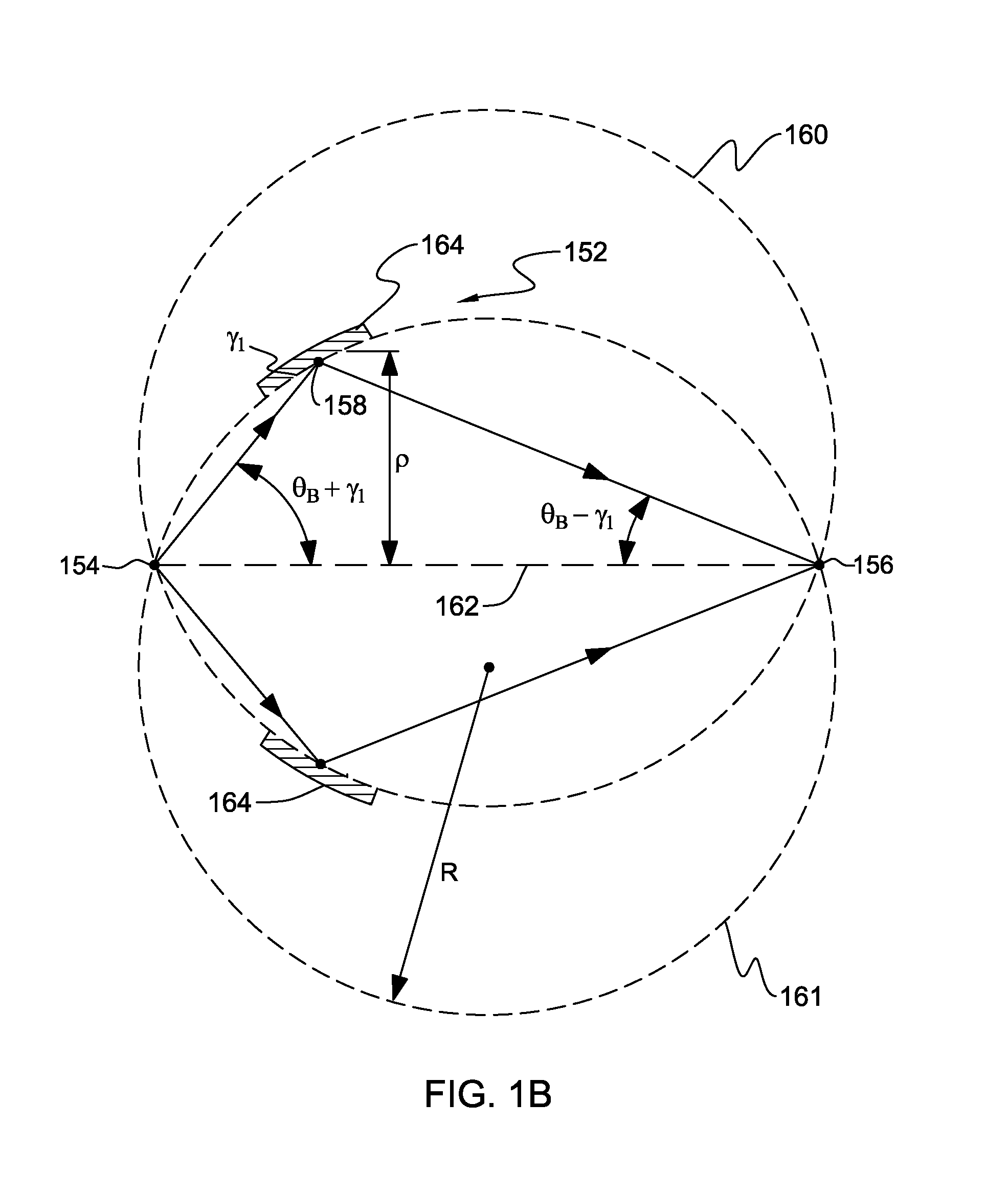XRF system having multiple excitation energy bands in highly aligned package
a technology of excitation energy band and high-alignment package, which is applied in the direction of material analysis using wave/particle radiation, instruments, nuclear engineering, etc., can solve the problems of significant loss of business, damage to brands and corporate image, and unsafe products that go well
- Summary
- Abstract
- Description
- Claims
- Application Information
AI Technical Summary
Benefits of technology
Problems solved by technology
Method used
Image
Examples
Embodiment Construction
Highly-Aligned X-Ray Source Assembly:
[0037]In accordance with the present invention, FIGS. 2-4 depict in various views (using like numerals to refer to like elements) a highly-aligned x-ray optic and source assembly 200 in accordance with the present invention. Various aspects of this package have been disclosed in the commonly assigned, previously-filed U.S. Provisional Applications entitled X-RAY OPTIC AND SOURCE ASSEMBLY FOR PRECISION X-RAY ANALYSIS APPLICATIONS, filed Mar. 5, 2008 as Ser. No. 61 / 033,899 and HIGHLY ALIGNED X-RAY OPTIC AND SOURCE ASSEMBLY FOR PRECISION X-RAY ANALYSIS APPLICATIONS, filed Mar. 25, 2008 as Ser. No. 61 / 039,220, each of which is incorporated by reference herein in its entirety.
[0038]As discussed in those Applications, the assembly includes a first section 210, second section 220, and third section 230, which together align an x-ray tube 240 to a sample spot 250, along a central transmission axis Z. Also aligned along this axis are multiple optic carria...
PUM
 Login to View More
Login to View More Abstract
Description
Claims
Application Information
 Login to View More
Login to View More - R&D
- Intellectual Property
- Life Sciences
- Materials
- Tech Scout
- Unparalleled Data Quality
- Higher Quality Content
- 60% Fewer Hallucinations
Browse by: Latest US Patents, China's latest patents, Technical Efficacy Thesaurus, Application Domain, Technology Topic, Popular Technical Reports.
© 2025 PatSnap. All rights reserved.Legal|Privacy policy|Modern Slavery Act Transparency Statement|Sitemap|About US| Contact US: help@patsnap.com



